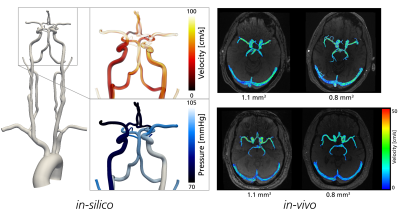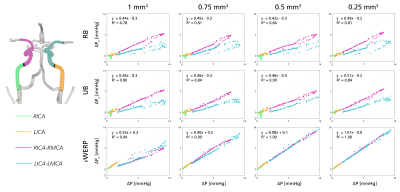David Marlevi1, Jonas Schollenberger2, Maria Aristova3, Edward Ferdian4, Alistair A Young4,5, Elazer R Edelman1, Susanne Schnell3,6, C. Alberto Figueroa2, and David Nordsletten2,5
1Massachusetts Institute of Technology, Cambridge, MA, United States, 2University of Michigan, Ann Arbor, MI, United States, 3Northwestern University, Chicago, IL, United States, 4University of Auckland, Auckland, New Zealand, 5King's College London, London, United Kingdom, 6University of Greifswald, Greifswald, Germany
1Massachusetts Institute of Technology, Cambridge, MA, United States, 2University of Michigan, Ann Arbor, MI, United States, 3Northwestern University, Chicago, IL, United States, 4University of Auckland, Auckland, New Zealand, 5King's College London, London, United Kingdom, 6University of Greifswald, Greifswald, Germany
Using in-silico and in-vivo experiments, we show how accurate estimates of cerebrovascular relative pressure can be achieved by 4D Flow MRI. However, accuracy depends on resolution (dx < 0.75 mm3) and estimation approach (optimized by a virtual work-energy relative pressure (vWERP) method).

Figure 1: (left) In-silico
model of the arterial cerebrovascular space, showing the extracted velocity and
pressure field of the main vessels of the circle of Willis; (right) Example output
from the separate in-vivo 4D Flow MRI
analysis, showing time-integrated pathlines within vessel regions superimposed
on axial magnitude images for two individuals, each at dx = 1.1 and 0.3 mm3.
